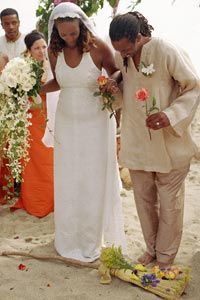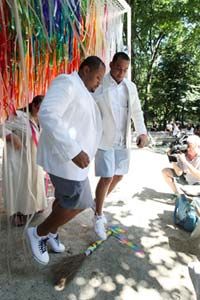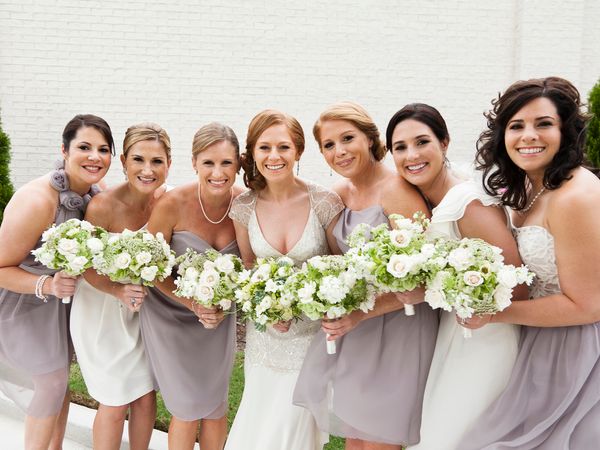Jumping the broom is a time-honored wedding tradition in which the bride and groom jump over a broom during the ceremony. The act symbolizes a new beginning and a sweeping away of the past, and can also signify the joining of two families or offer a respectful nod to family ancestors. For all of these reasons, jumping the broom is an increasingly popular part of many modern wedding ceremonies [source: African American Roots, Inc.].
Today's wedding brooms, however, are a far cry from those first used in jumping the broom ceremonies. They're still made with a wooden handle and natural bristles, but they're kept as treasured keepsakes and probably never actually used to sweep the floor.
Advertisement
Some brides prefer to create their own brooms, while others purchase ornately decorated brooms ready-made. Far from ordinary, these brooms are outfitted beautifully with silk ribbons, fresh or silk flowers, bows, beads and more.
During the ceremony, broom jumping can be paired with a prayer, song, poem or simple explanation of the tradition. One song, "At an Ole Virginia Wedding," was frequently used in the U.S. in the early 1900s as an accompanying tune. The passage's sentiment warns others to respect the couple's union and encourages the couple to cherish each other [source: Cole]. Today, many brides attach the verse to their wedding brooms.
The broom can even be used to include guests in the ceremony: A couple can have guests write their names on pieces of decorative paper attached to ribbons, and then the ribbons are tied to the broom before it is jumped. This symbolizes that the guests -- and their associated well wishes -- go into the marriage with the couple.
In Christian ceremonies, ribbons on the broom may be considered symbolic of the tie that binds the couple, while the broom handle represents God and the straw signifies the couples' families [source: Kerby]. In pagan ceremonies, the broom represents a perfect balance between the male and female, with the handle symbolizing a phallus and the bristles symbolizing female energies [source: Pagans Path].
Regardless of the ways in which the broom is incorporated into a wedding, it should be accompanied by a full understanding of the custom's historical significance. Learn about the ceremony's history on the next page.
Advertisement




